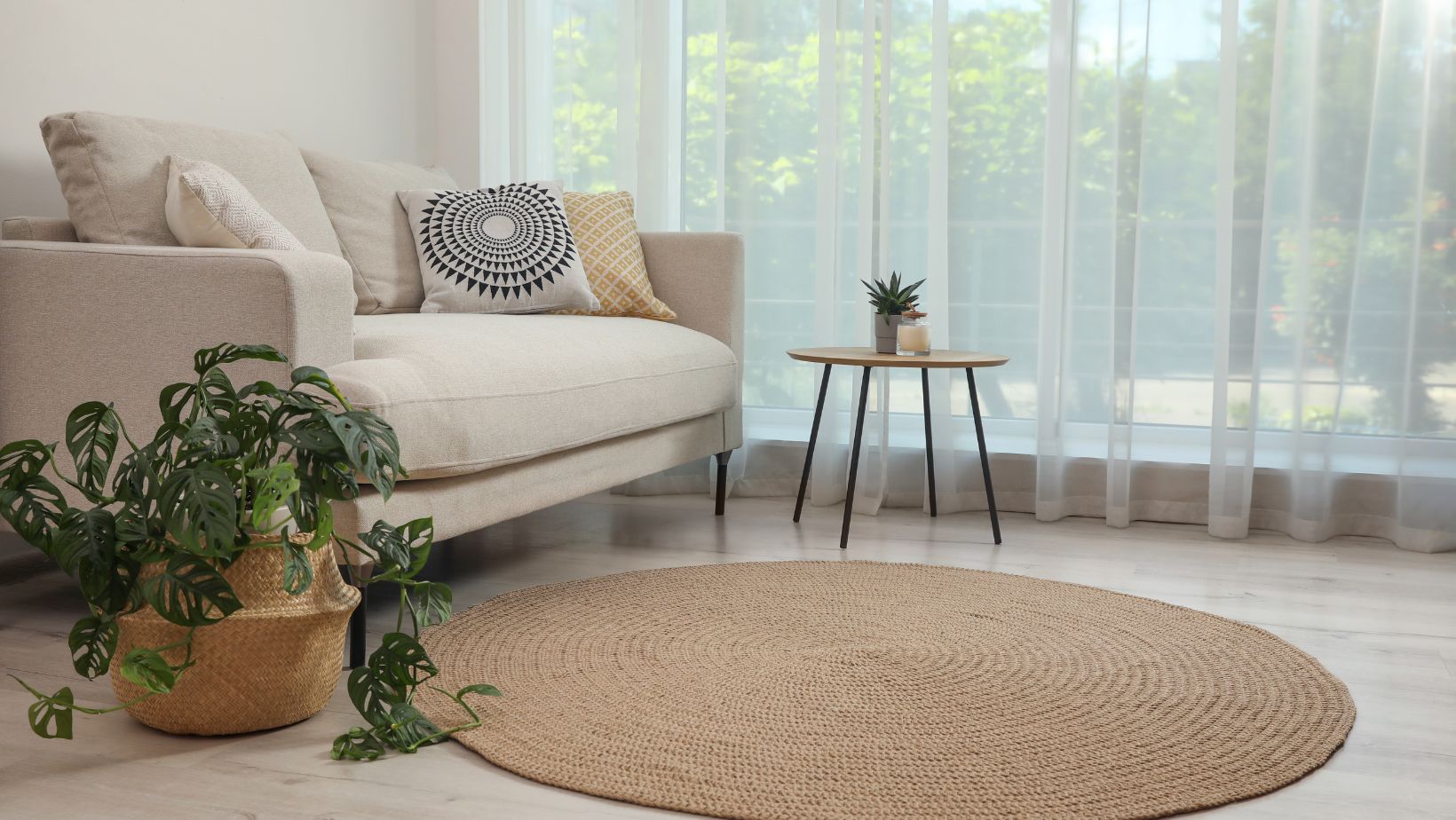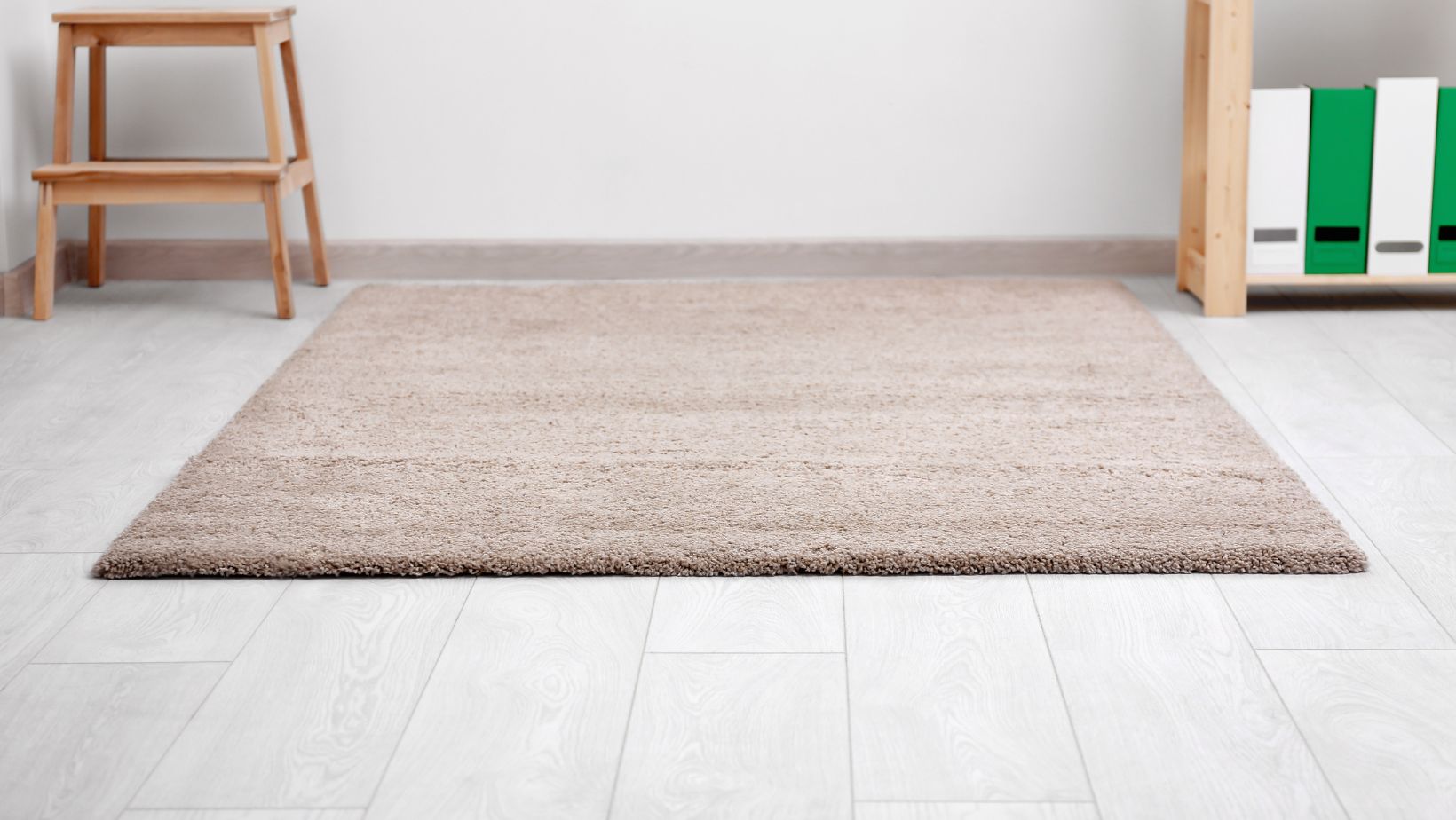Looking to expand the appearance of your limited space?
A carefully chosen rug has the power to open up a tight space and create a welcoming atmosphere. Few people recognize that placing rugs in specific areas is a key yet often ignored method to enhance small spaces.
The issue?
This article demonstrates the perfect rug selection strategy that both expands the appearance of your small spaces and adds both style and comfort.
What You’ll Discover:
- Why Rugs Matter in Small Spaces
- Strategic Sizing for Compact Areas
- Best Materials for Small-Space Rugs
- Pattern & Color Psychology
- Placement Strategies That Create Visual Space
- Maintenance Tips for Small-Space Rugs
Why Rugs Matter in Small Spaces
Rugs protect floors while serving as dynamic visual elements that can change both the ambiance and utility of a room.
Understanding why rugs play a crucial role in small spaces will help you optimize your interior design.
- Studio apartments and multi-purpose rooms benefit from rugs since they provide visual separation between different functional areas without the need for bulky dividers.
- Strategic rug placement creates an illusion of expanded floor space by fooling the eye.
- Proper furniture anchoring is essential because unanchored furniture appears to float which makes small spaces feel disorganized and more confined.
A trend analysis conducted for 2025 reveals that materials which are natural and sustainable have gained popularity because they combine style with environmental responsibility. Sustainable materials such as sisal and jute along with recycled materials serve as perfect choices to enhance small spaces with eco-friendly elements.
Our brains react differently when presented with a well-defined space as opposed to a cluttered environment which creates an interesting psychological interaction. Strategic rug placement functions as a technique to manipulate your brain’s understanding of space!
Strategic Sizing for Compact Areas
Choosing the right rug size for small spaces is essential to achieve the desired room effect. Choosing the wrong rug size for your room will make the space feel even more confined.
Fundamental guidelines for choosing rug sizes in limited spaces:
Go Big (But Not Too Big): Small rugs result in a “postage stamp” appearance which makes your space look even more confined. Your rug needs to extend 6 to 8 inches past your furniture edges on every side.

Consider the “Furniture Legs Rule”: Placing only the front legs of your furniture on the rug helps maintain openness in tiny spaces while defining the room’s boundaries.
Leave Breathing Room: Ensure that there are 8-12 inches of exposed floor space remaining between your rug edges and the surrounding walls. The design choice produces an appearance of increased floor area.
Studies demonstrate that selecting the appropriate rug size is essential. Narrow spaces benefit from runner rugs which contribute to creating a unified appearance. Small round rugs work well to delineate areas in intimate spaces while maintaining a balanced room feel.
For a 500-square-foot studio apartment we decided on a 6×9 rug instead of a traditional 5×7. Counter-intuitive? Yes. Effective? Absolutely! The oversized rug increased the perceived size and presence of the living space.
Ideal Materials for Small-Space Rugs
The choice of rug material affects light reflection in your space and the ease of room maintenance.
Top material choices for small spaces:
- This rug material gives warmth and texture but stays thin and lightweight. This material choice produces a warm atmosphere while maintaining visual lightness.
- Flatweave Cotton rugs manage to bring color and pattern to a room while occupying minimal visual space. They’re also typically less expensive.
- Sisal, jute, and seagrass natural fibers provide excellent light reflection which works with organic texture in almost every interior design theme.
High-traffic compact areas should use durable synthetic blend rugs or fade-resistant nylon options along with eco-friendly jute or sisal rugs and stain-resistant wool varieties specifically for living rooms, hallways, and entryways.
Few people understand that rug texture influences room acoustics in limited spaces. Plush rugs function as sound absorbers which enhance privacy and comfort in compact apartments.
Pattern & Color Psychology for Space Maximization
What is the hidden technique to make small rooms appear larger? Psychological principles of pattern and color utilization are essential for creating visual space.
Pattern strategies that expand visual space:
- Horizontal stripes give the illusion of a wide space in narrow rooms whereas vertical stripes create the effect of a taller ceiling.
- Tiny repeating patterns create visual depth which makes floors seem to stretch out farther.
- Bold border designs on rugs lead viewers’ eyes outside of the central pattern which makes the surrounding space seem larger.
Modern design principles show that bold artistic patterns can completely transform the appearance of a room. Adding abstract or hand-painted designs to small spaces creates an artistic atmosphere which lends them greater style and welcoming comfort instead of making them feel confined.
Color choices that maximize space:
- Light-colored flooring such as beige, grey and soft pastels reflect light to make floor areas seem bigger.
- For a seamless and space-enhancing effect, select rugs that match the color of your flooring.
- A bold color creates a focal point that draws attention away from the room’s dimensions when used with intention.
The small bedroom seemed bigger after I paired it with a cream rug featuring a soft geometric pattern that coordinated with the wall color. The visual illusion created by the rug and wall color made the space appear twice its size because the eye was unable to identify where the floor stopped and the walls started.
Placement Strategies That Create Visual Space
The placement of your rug holds equal importance to the rug selection itself. Careful rug positioning creates surprising visual expansion in your room.

Try these placement tricks for small spaces:
- Position your rug at the center of the room to establish a focal point which expands the perceived space around it.
- A rectangular rug placed at an angle creates visual interest and widens the appearance of narrow rooms.
- Add depth to a tiny room by stacking a bold smaller rug over a bigger neutral rug.
People often make a major mistake in small spaces by pushing all their furniture against the walls. Position your furniture around a central rug to maximize small room spaces. This unexpected strategy results in making the space appear more expansive.
Design experts recommend using rugs that extend beneath the front legs of furniture in confined areas to achieve a balanced appearance that makes spaces seem larger.
Essential Maintenance for Small-Space Rugs
Cleaning rugs in small spaces serves a dual purpose because it maintains hygiene standards and protects the spacious ambiance you’ve designed.
Key maintenance tips:
- In small areas small amounts of debris and dust become visible creating the illusion of clutter.
- Compact areas make stains stand out more to the observer. Keep a spot cleaner handy.
- To keep your rug looking vibrant and textured which helps expand your space, arrange professional cleanings to occur every 12-18 months.
Water exposure causes shrinkage in natural fiber rugs like jute and sisal so maintain their space-enhancing qualities through dry cleaning instead of traditional methods.
The Bottom Line
The right rug choice produces a significant effect in limited spaces. This rug functions beyond decoration as it turns tight spaces into inviting environments.
A combination of strategic sizing choices along with quality materials and optical illusion patterns placed wisely enables tiny rooms to appear more spacious.
Design principles for small spaces require each item to perform multiple functions. Your rug functions as more than just floor covering because it defines spaces while reflecting light and affects psychological perception of your environment.
When your space feels too tight search for solutions right beneath your feet.

More Stories
Alexousa104: A Comprehensive Overview
Compact Gadgets for Small Apartments: When Every Square Meter Counts
Why DIY Drying Can Make Water Damage Worse